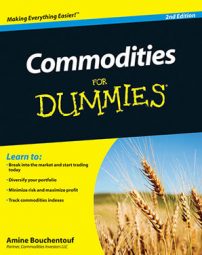Food is the most essential element of human life, and the production of food presents solid money-making opportunities for non-farmers through investing in the commodities markets.
Coffee: Coffee is the second most widely produced commodity in the world, in terms of physical volume, behind only crude oil. Folks just seem to love a good cup of coffee, and this provides good investment opportunities.
Cocoa: Cocoa production, which is dominated by a handful of countries, is a major agricultural commodity, primarily because it’s used to create chocolate.
Sugar #11: Sugar is a popular food sweetener, and it can be a sweet investment as well. Sugar #11 represents a futures contract for global sugar.
Sugar #14: Sugar #14 is specific to the United States and is a widely traded commodity.
Frozen concentrated orange juice — type A: FCOJ-A, for short, is the benchmark for North American orange juice prices because it’s grown in the hemisphere’s two largest regions: Florida and Brazil.
Frozen concentrated orange juice — type B: FCOJ-B, like FCOJ-A, is a widely traded contract that represents global orange juice prices. This contract gives you exposure to orange juice activity on a world scale.
Corn: Corn’s use for culinary purposes is perhaps unrivaled by any other grain, which makes this a potentially lucrative investment.
Wheat: According to archaeological evidence, wheat was one of the first agricultural products grown by man. It’s an essential staple of human life and makes for a great investment.
Soybeans: Soybeans have many applications, including as feedstock and for cooking purposes. The soybean market is a large market and presents some good investment opportunities.
Soybean oil: Soybean oil, also known as vegetable oil, is derived from actual soybeans. It’s used for cooking purposes and has become popular in recent years with the health-conscious dietary movement.
Soybean meal: Soybean meal is another derivative of soybeans that’s used as feedstock for poultry and cattle. It may not sound sexy, but it can be a good investment.
Live cattle: For investors involved in agriculture, using the live cattle futures contract to hedge against price volatility is a good idea.
Feeder cattle: Whereas the live cattle contract tracks adult cows, the feeder cattle contract hedges against the risk associated with growing calves. The markets don’t widely follow this area, but it’s important to figure out how this market works.
Lean hogs: They may not be the sexiest commodity out there, but lean hogs are an essential commodity, making them a good trading target.
Frozen pork bellies: Frozen pork bellies are essentially nothing more than good old bacon. This industry is cyclical and subject to wild price swings, which provides unique arbitrage trading opportunities.

